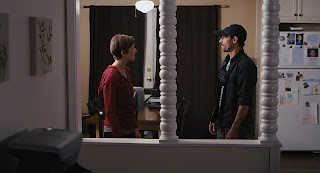Movie Review - The Missing Picture
Nominated for the Academy Award for Best Foreign Language Film, this documentary from and about Cambodia could almost be a companion piece to the film about Indonesia The Act of Killing, which was nominated this same year for the Academy Award for Best Documentary Feature. Both movies are about oppressed southeast Asian people, experiencing an almost genocide. People from Indonesia were being outright murdered. The people from Cambodia were more so being starved to death. Whereas The Act of Killing puts the audience in the shoes of the perpetrators of the crime, this film puts us in the shoes of the victims.
Writer-director Rithy Panh is himself a victim and this movie is essentially his memoir about the horror he faced during his childhood. His story is compelling on its own, but how Panh distinguishes his story even more is by incorporating a visual element unlike most documentaries.
Panh utilizes old film footage from the 1970s but most documentary directors will put together re-enactments. Those re-enactments will often be live action. The rarer ones are animated. The even rarer ones would use stop-motion animation. This movie opens with what looks like clay figures being carved for a stop-motion sequence.
Yet, the clay figures don't move or have any kind of motion. Panh's camera slowly drifts over scenes of still clay figures, dozens and dozens of figures, meticulously arranged to depict scenes from his childhood. His observations center around the incidents on April 17, 1975. That was the day the Khmer Rouge invaded and took control of Cambodia, forcing it to conform to a communist way of life.
However, the people in control treated the other people horribly. Impoverished families like that of Panh were forced to work rice fields or be earth movers, shoveling and shuttling rocks. They weren't given much if any money. They were also given little to no food. Famine ran rampant, seemingly not due to actual lack of resources but as a way of maintaining power.
Child labor was intense. Brainwashing or propaganda was involved. Protests and dissension were stifled. People weren't allowed to fish. Some people were tortured who fought back and were even executed. Panh's movie merely is great testimony taking us through this atrocity methodically.
Instead of getting answers straight from the horse's mouth like Enemies of the People (2010), it's all Panh's often poetic interpretation of what happened. The detail that Panh puts into his scenes and narration, which is mostly straightforward and honest, is what's outstanding here.
Five Stars out of Five.
Not Rated but recommended for mature audiences.
Running Time: 1 hr. and 36 mins.
Available on Netflix Streaming.
Writer-director Rithy Panh is himself a victim and this movie is essentially his memoir about the horror he faced during his childhood. His story is compelling on its own, but how Panh distinguishes his story even more is by incorporating a visual element unlike most documentaries.
Panh utilizes old film footage from the 1970s but most documentary directors will put together re-enactments. Those re-enactments will often be live action. The rarer ones are animated. The even rarer ones would use stop-motion animation. This movie opens with what looks like clay figures being carved for a stop-motion sequence.
Yet, the clay figures don't move or have any kind of motion. Panh's camera slowly drifts over scenes of still clay figures, dozens and dozens of figures, meticulously arranged to depict scenes from his childhood. His observations center around the incidents on April 17, 1975. That was the day the Khmer Rouge invaded and took control of Cambodia, forcing it to conform to a communist way of life.
However, the people in control treated the other people horribly. Impoverished families like that of Panh were forced to work rice fields or be earth movers, shoveling and shuttling rocks. They weren't given much if any money. They were also given little to no food. Famine ran rampant, seemingly not due to actual lack of resources but as a way of maintaining power.
Child labor was intense. Brainwashing or propaganda was involved. Protests and dissension were stifled. People weren't allowed to fish. Some people were tortured who fought back and were even executed. Panh's movie merely is great testimony taking us through this atrocity methodically.
Instead of getting answers straight from the horse's mouth like Enemies of the People (2010), it's all Panh's often poetic interpretation of what happened. The detail that Panh puts into his scenes and narration, which is mostly straightforward and honest, is what's outstanding here.
Five Stars out of Five.
Not Rated but recommended for mature audiences.
Running Time: 1 hr. and 36 mins.
Available on Netflix Streaming.











Comments
Post a Comment